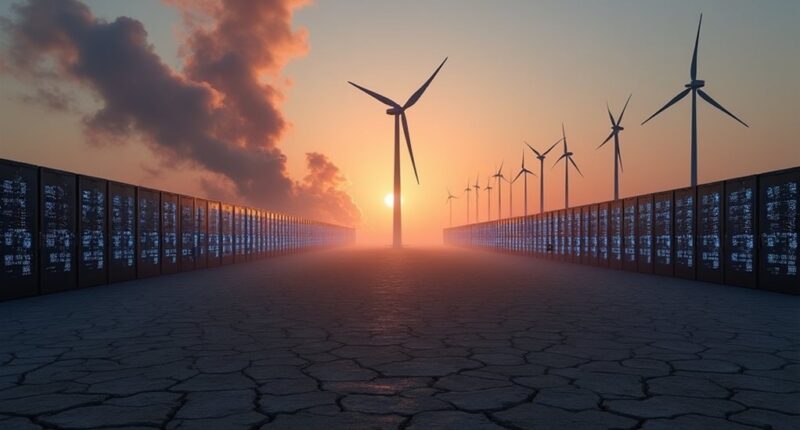AI’s surging energy appetite could indeed stir up climate fears. As AI’s electricity usage doubles by 2030, it may rival entire nations like Japan. Think of high-powered GPUs as race cars zipping through energy, while data centers quench their thirst with water like they’re training for an Olympic swim. With rising greenhouse gas emissions complicating climate policy, the balance between tech advancement and environmental health is tight. Curious about how this tech tango unfolds? Stay tuned for more insights!
AI’s Growing Energy Demands and Climate Impact
As the world becomes increasingly enamored with artificial intelligence, a nagging concern looms: the energy appetite of these digital marvels might just rival that of a small army of tech-savvy teenagers at an all-you-can-eat pizza buffet. In 2022, AI-driven data centers consumed up to 2% of global electricity, and projections suggest that figure could double by 2030.
Imagine the sheer amount of energy required to train large AI models; for example, training BLOOM emits more greenhouse gases than an average French person’s entire yearly output. The insatiable thirst of AI doesn’t stop at electricity. These data-hungry behemoths may require a staggering 945 TWh annually by 2030—enough energy to power Japan! And let’s not forget about water; cooling these centers could consume 6.6 billion cubic meters each year, comparable to half of the U.K.’s water usage. It’s a bit like trying to quench the thirst of a dragon with a garden hose. Ironically, while some companies are developing sustainability tracking tools using AI to measure Scope 3 emissions across supply chains, the technology itself contributes significantly to those very emissions.
The energy needed to train AI models is staggering; BLOOM’s emissions exceed an average French person’s yearly output.
Why is AI so ravenous? Well, the size and complexity of AI models are growing exponentially. Training and retraining these models demand high-powered GPUs and TPUs, which are like the Ferraris of computing—fast, flashy, and thirsty for fuel. Rising energy consumption of AI is a pressing issue that requires immediate attention from policymakers and technologists alike. Even more concerning, AI’s energy consumption could account for 8% of total electricity needs by 2030, further straining existing resources.
Unfortunately, the energy efficiency gains from these advancements often lead to a phenomenon known as the “Jevons paradox,” where increased efficiency somehow leads to greater overall energy consumption. This dilemma complicates climate policy and threatens to offset the benefits of renewable energy. Advocates are calling for measures like carbon taxes and emissions tracking systems specifically for AI.
Until the shift to renewable energy sources speeds up, fossil fuels will continue to dominate the energy landscape. In the race between technological advancement and climate conservation, it seems AI’s energy hunger might be the unexpected contender, leaving the planet’s health hanging in the balance.









